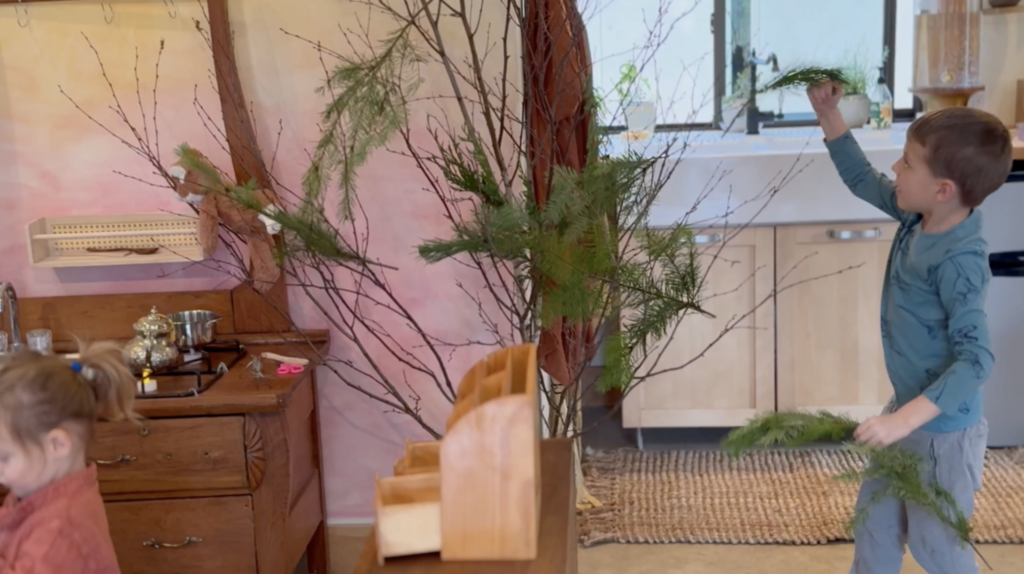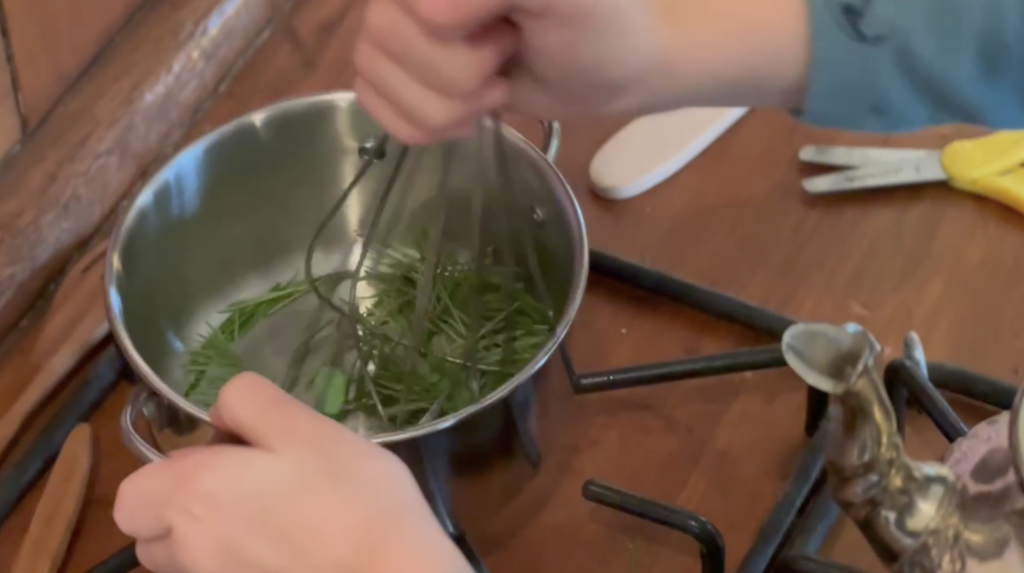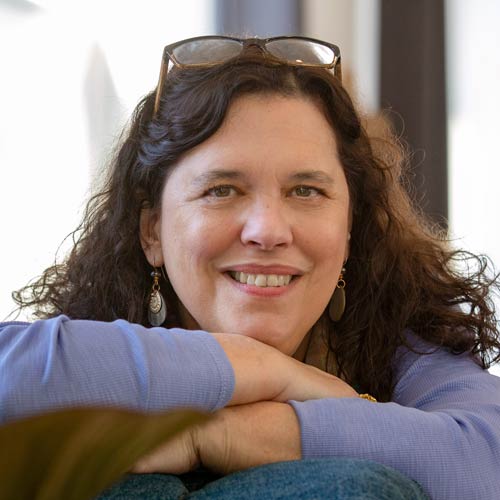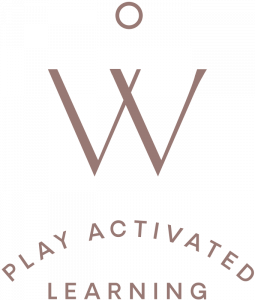I remember my first preschool classroom. I had spent the summer getting centers and their materials ready. I had visited thrift stores and garage sales, searching for special and unique items for each area. Antique rolling pins and cutting boards for the play dough area. Fabulous stainless steel teapots in the home living area. Wooden crates with lids for the construction area.
During open centers on the first day of school, I noticed Clara took the rolling pins out of the play dough area and into the home living area. At the same time, Jacob had taken one of the wooden crates to the art center to hold up his cardboard.
My first impulse was to stop this madness! Everything had a home. The rolling pins MUST stay with the play dough! And the wooden crates are for building with.
But as I watched materials being carried from one area of the classroom to another, I saw that every child had an intended use for the material. It was not random. It was purposeful.
The items carried into new areas were engaging children’s play.

One day, a few weeks later, the cross-pollination of materials was irritating me. I was uncomfortable as a new educator. No one else allowed it. What the heck was I thinking? I better stop this madness.
I promptly told the children they had to keep the materials where they “belonged” in their center “home.” I stood barking orders to return the classroom to its original tidy order.
Something happened that really surprised me. Children were fighting more. The classroom seemed off.
Jacob pulled at my hand.
“Mrs Haughey, can I take the wooden crate to the art center for today only? I really need it. I can’t do my art without it.”
There it was. I had imposed a constraint on the children’s thinking and ideas. I stopped all uses of materials that did not fit within the boundaries of certain materials that can only be used in specific centers.
Why would I want to stop the creativity, ideas, and possibilities in play when this was building essential neural pathways of flexible thinking and innovation?
So from that day on, I let them cross-pollinate.
Now, I have a feeling you might be thinking about one important logistics, in fact, the biggest issue – cleaning up. A “messier” classroom is a small price for the richer play that emerged.

Wondering where to start? Consider these first steps:
- The first step is to teach the children where everything belongs. I will often start the year with fewer materials and loose parts so we can return everything to its spot with more ease. Everything in the classroom has a home.
- Give time at the end of play for pick-up. Consider using visual labels to help children remember where materials belong.
- I like to tell the children they have the right to use the materials where they wish (except art materials). And with that right comes the responsibility for caring for that material by returning it to its home in the classroom.
- If cross-pollination overwhelms you, start with two areas and see how it goes. Construction center and Home Living are great cross-pollinators.
- Take it slow.




